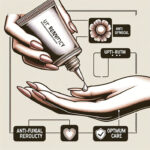Fingernail Fungus Facts: Separating Myth from Reality

Fingernail Fungus: What’s Fact and What’s Fiction?
Getting to Know Fingernail Fungus
So, What Exactly Is Fingernail Fungus?
Imagine your nails feeling a bit off—discolored, thicker than usual, or even crumbling at the edges. That’s what fingernail fungus can do. Although many people think it only happens when you neglect your nails, the truth is, anyone can get it. This pesky infection is caused by various fungi that sneak into the nail plate, and sometimes even the nail bed, upsetting the nail’s natural balance. Over time, these fungi can build up into stubborn biofilms, making the infection even tougher to shake. A little knowledge about these critters underscores just how important good nail hygiene really is.
Myths vs. Medical Realities
There’s a heap of old wives’ tales out there about fingernail fungus. For instance, many believe that only people with poor hygiene fall prey to these infections. In reality, even the nail-care conscious among us aren’t completely off the hook—they can be affected by fungi just by being in the wrong place at the wrong time. Other myths paint it as a mere cosmetic nuisance, but anyone with a compromised immune system knows the story can be much more painful and disruptive. Scientific insights remind us that a mix of factors—from damp surroundings to less-than-ideal circulation—can play a role in fungal growth, so clear out the myths and focus on the facts.
Why It Matters: Its Reach and Impact
Surprisingly, fingernail fungus isn’t as rare as you might think. It touches people of all ages and walks of life across the globe. And it’s not just about looks—a fungal nail infection can actually be quite uncomfortable and sometimes painful, interfering with your day-to-day activities. In more severe cases, it can even change the nail’s structure, affecting hand function. When you add up the money spent on treatments each year, it’s clear this is a problem that needs attention. Understanding just how common nail fungus is can pave the way for earlier intervention and better public awareness.
A Look Back: Historical Views on Fingernail Fungus
Old-School Beliefs and Remedies
Back in the day, people had some pretty interesting ideas about nail issues. Many cultures attributed what we now recognize as fingernail fungus to supernatural forces or mysterious miasmas. Early remedies ranged from vinegar soaks to herbal infusions and even plant-based oils with supposed antimicrobial powers. While these methods might seem rudimentary now, they were early attempts at solving a problem that, for lack of modern medicine, had everyone scratching their heads. Interestingly, some of those old remedies had real antifungal properties, even if they were more folklore than science at the time.
Modern Treatments: A Complete Transformation
Today’s approach to treating fingernail fungus is a far cry from ancient home remedies. Thanks to advances in clinical research and pharmaceutical innovations, doctors can now choose from a whole spectrum of treatments, including topical antifungals, oral meds, and even laser therapies. These contemporary treatments aim not only to improve the nail’s appearance but also to tackle the fungi head-on, reducing the chances of a comeback. It’s a clear shift from anecdotal treatments to methods firmly backed by research—ensuring that patients receive care that truly works.
Breaking Down the Stigma
Despite these advances, fingernail fungus still carries a bit of a stigma. Many people mistakenly link it with poor hygiene, which can make those suffering feel embarrassed or ashamed. The negative image partly stems from old beliefs and the fear of spreading the infection, even though research shows it’s typically not as contagious as many believe. This misunderstanding sometimes stops people from getting the proper diagnosis and treatment they need. Educating both the public and patients is key to breaking down these barriers and helping everyone feel more comfortable about seeking help.
What Leads to Fingernail Fungus?
The Many Risk Factors at Play
A whole host of factors can open the door to fingernail fungus. Conditions like diabetes, a weakened immune system, or even poor circulation create a favorable environment for these stubborn fungi. Additionally, certain medications can also ramp up your risk by interfering with your body’s natural defenses. It’s a bit of a mixed bag—some factors you can control through lifestyle choices, while others are part of your genetic makeup. Recognizing this intricate web of influences is vital in both preventing the infection and tailoring the right treatment for you.
How Your Environment and Lifestyle Matter
Ever wondered if your daily habits might be making you more susceptible to fungus? It turns out they can. Regular visits to damp, humid spaces like communal showers or gyms can be a breeding ground for these fungi. Even something as simple as wearing gloves for too long and not letting your nails breathe can invite trouble. Other lifestyle factors—like diet or stress—can also have an indirect impact by influencing your overall immune response. Making small changes, like drying off thoroughly or choosing the right footwear, can significantly reduce your risk.
The Genetic Factor
There’s also a bit of luck of the draw involved. Some folks might inherit a tendency toward fungal infections, perhaps due to how their immune system works or the natural robustness of their nail structure. While genetics alone rarely cause the problem, they can certainly amplify it when combined with other factors like diabetes or constant exposure to damp conditions. Knowing there’s a genetic side to it can encourage more careful, proactive measures—even if you can’t change your genes, you can definitely watch out for early signs.
Pinpointing the Problem: Diagnosing Fingernail Fungus
Spotting the Signs
Catching fingernail fungus early on is crucial, and your nails will usually give you a heads-up. Look out for changes like a yellowish or brown tint, thickening of the nail, or even a crumbly texture that might signal the nail’s beginning to separate from the bed. Occasionally, you might notice a slight odor too. While these symptoms might not hurt much at first, they can turn into a bigger issue if ignored. Being alert to these changes will allow you to seek a doctor’s advice before the infection gets out of hand.
How the Pros Diagnose It
When it comes to figuring out if you’ve got a fungal problem, the experts don’t just rely on what they see. They often run tests—whether it’s looking at a stained sample under a microscope, setting up culture tests, or even using PCR techniques to get to the bottom of what’s happening. This thorough process not only confirms the infection but can also reveal what type of fungus is involved, paving the way for a treatment plan that’s on target.
Time to See the Doctor
Sure, many mild cases can be tackled with over-the-counter remedies. However, if you notice the infection spreading, experience significant discomfort, or if your at-home treatments haven’t made a difference, it’s time to consult a doctor. For people with chronic conditions like diabetes or a compromised immune system, even a small infection can be a big deal. Early medical advice is key to preventing complications and ensuring you get the most effective care.
Sorting Out Fact from Fiction
Busting Some Myths
There’s a lot of misinformation floating around about fingernail fungus. One common myth is that it’s nothing more than a cosmetic issue, but anyone suffering from it knows that the pain and potential complications are no joke. Another false notion is that frequent nail soaking is a cure-all, when in fact too much moisture can actually encourage fungal growth. Studies and solid clinical evidence have set the record straight, emphasizing that getting facts right is essential for proper treatment.
What the Science Says
A growing body of research is shining light on best practices for managing and treating fingernail fungus. Whether it’s evaluating the effectiveness of topical treatments, oral medications, or even cutting-edge laser therapies, the science tells us that early and well-rounded intervention can really make a difference. Peer-reviewed studies and clinical trials show that when you combine lab findings with real-life case studies, you get a reliable roadmap for treatment that beats anecdotal remedies any day.
Insights from the Experts
Dermatologists and podiatrists have long emphasized that while many cases of fingernail fungus respond well to standard treatments, others require a more tailored, long-term approach. Real-world case studies highlight that even subtle nail changes deserve attention. Since everyone’s different—thanks to factors like genetics, lifestyle, and environmental exposure—personalized treatment plans are often the best bet. The takeaway? Staying educated and keeping up with regular check-ups can help nail down (pun intended) the best way to tackle the issue.
Treatment Options: What Works Best?
Over-the-Counter or Prescription: What’s Your Pick?
When it comes to treating fingernail fungus, you might find yourself weighing over-the-counter options against prescription medications. OTC products like antifungal nail lacquer or creams can be handy for lighter cases, assuming you stick with them consistently. But if the infection is stubborn or severe, prescription treatments—designed to dig deeper into the nail—might be your best bet. In many cases, doctors will take your overall health and nail condition into account before recommending the best approach.
Home Remedies: Sorting Fact from Fiction
The internet is awash with home remedy tips for tackling nail fungus—everything from tea tree oil to vinegar soaks and even garlic applications. While some of these natural treatments might offer a little help, they’re usually no replacement for a doctor’s advice, especially in more aggressive cases of infection. It’s important to remember that anecdotal successes don’t always match up with solid clinical evidence. Use home remedies as a complement to, not a substitute for, proven medical treatments.
Keeping It at Bay: Prevention and Lifestyle Tweaks
Sometimes, the best treatment is simply not getting infected in the first place. Quick-dry habits, breathable gloves when you’re around moisture, and regular nail trimming can all play a big role in prevention. Don’t forget to clean and disinfect your nail tools and treat any minor changes as soon as you spot them. A balanced diet rich in vitamins can also give your immune system a little extra backup. By building these simple habits into your routine, you’re essentially setting up a strong defense against any future fungal foes.
Living with Fingernail Fungus: Daily Tips and Long-Term Strategies
Everyday Nail Care
If you’re already dealing with fingernail fungus, your daily care routine can make all the difference. Start by giving your nails a good clean and ensuring they’re thoroughly dried after any exposure to water. This little ritual can help break up the damp conditions fungi love. Many experts suggest using antifungal creams as a preventive measure, especially if you often find yourself in communal spaces. Keeping an eye on any changes in your nails can catch problems before they spiral out of control.
Long-Term Management: Staying One Step Ahead
For those who find that nail fungus keeps making a comeback, long-term management is key. Often, this means combining regular antifungal treatments with adjustments to your lifestyle—like scheduled nail care and periodic check-ups—to keep the issue under control. Adding supplements or engaging in activities that boost circulation may also help. The goal is to transform your routine into a kind of fortress, where early intervention and continuous care reduce the chances of the infection returning.
Spread the Word: Educate Yourself and Others
Knowledge really is power when it comes to managing fingernail fungus. Taking the time to learn about treatments, prevention strategies, and even the science behind the infection empowers you to make smarter choices. Whether you’re chatting with a healthcare provider or simply doing your own research, staying informed not only benefits you—it can also help others who might be struggling in silence. The more we all know, the easier it becomes to break down the myths and tackle the problem head-on.





